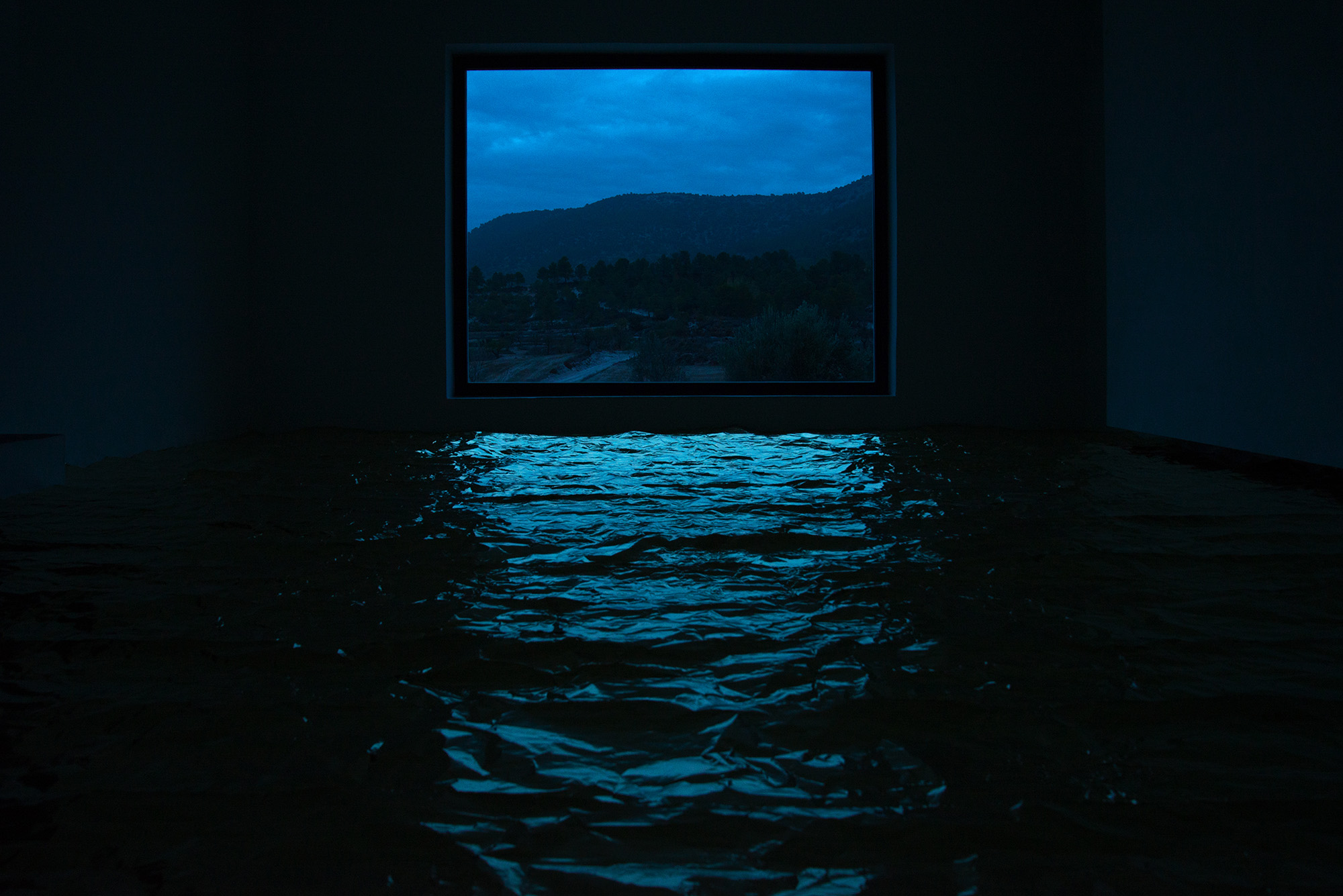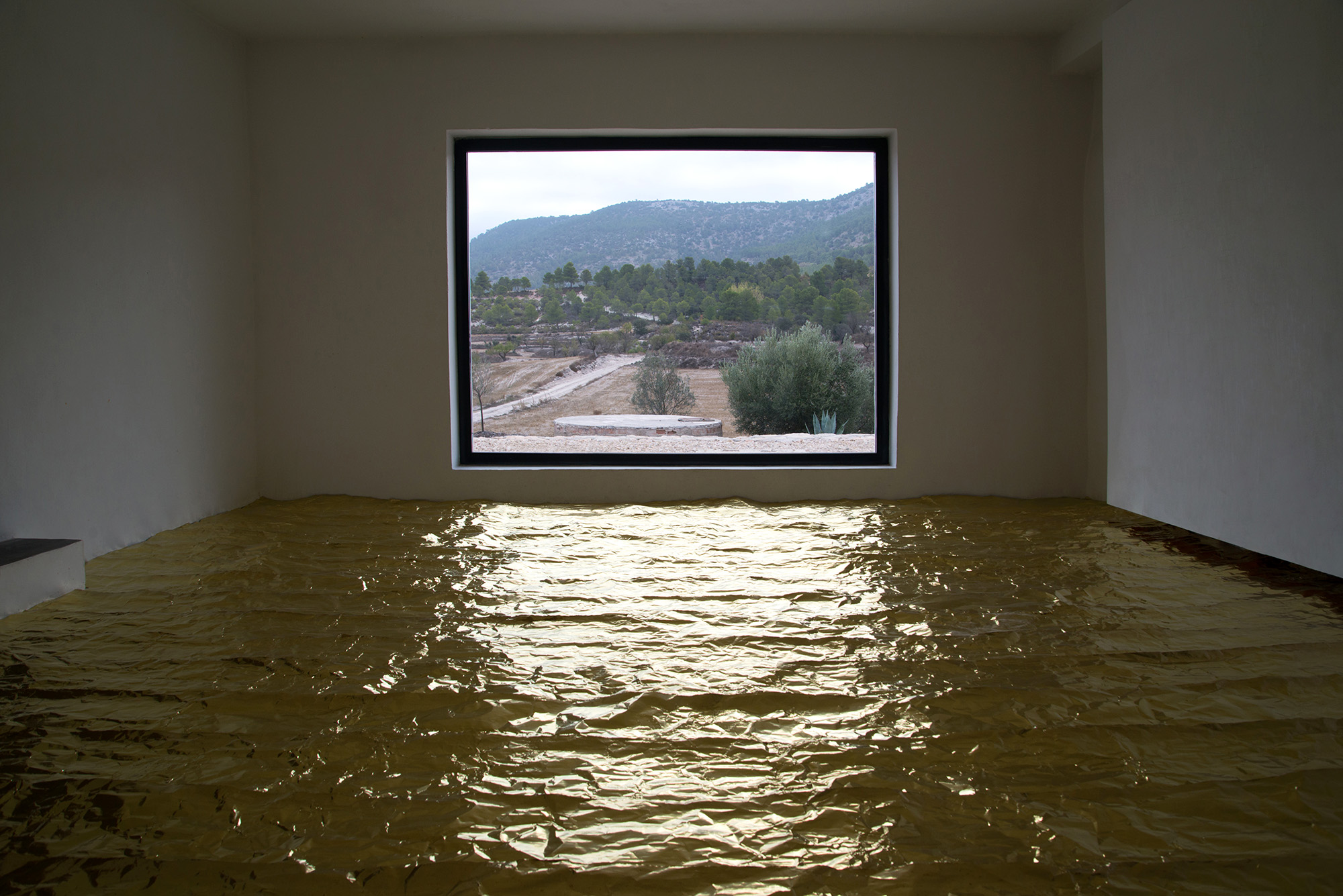DESERT POOL (If every desert was once a sea)
Joya: arte + ecología, Spain
Site-sensitive work created as Artist in Residence at Joya: arte + ecología
Sierra de María-Los Vélez Natural Park
Supported by the Ontario Arts Council
Brass, natural patina from earth and rainwater
2016
Desert Pool (If every desert was once a sea) is the culmination of an artist residency in southern Spain’s Sierra de María-Los Vélez Natural Park at Joya: arte + ecología, an off-grid arts-led research centre situated in an alpine desert. The elemental installation represents an envisioning of the ancient sea that occupied the mountainous region millions of years before the current desert ecology, a time when the landscape’s highest peaks may have been islands.
Situated in the driest region of Europe in the rain shadow of the Sierra Nevada mountain range, the Sierra de María-Los Vélez Natural Park lies in a massive alpine mountain system located in the basins of the Cordillera Subbética, northeast of the Tabernas Desert. Due to its proximity to the coast of the Mediterranean Sea, the Sierra de María-Los Vélez Natural Park once rested beneath prehistoric waters as part of sedimentary deposits on a primitive sea floor. Approximately seven to eight million years ago during the late Miocene period, an ancient sea covered the Cordillera almost completely, except for a few areas which became islands (1). Evidence of this ancient water body is readily exhibited across the desert landscape in an abundance of fossilized marine life specimens preserved in the terrain’s eroding sedimentary layers.
Desert Pool consists of three 100-foot (92-metre) lengths of raw brass foil which were introduced into a large barranco (a dry, ravine-like fluvial channel) in the Sierra de María-Los Vélez Natural Park. The material was trailed through the barranco as a method of tempering and etching the metal with the terrestrial textures of the rainwater pathway. After traversing down the secluded and narrow barranco passage beneath steep bluffs of parched limestone, the metal was left in situ for a few days to develop a natural patina. Spirited night winds would lift and twist the lengths of foil around rocky outcrops. In the daytime, under the heat of the intense sun, combined with morning condensation and direct contact with the minerals present in the ground, the metal surface developed oxidation marks and marbled stains were contributed by the surrounding plants. A rare light rainfall seasoned the metal surface with a raindrop pattern. Aleppo pine needles deposited by the wind were similarly recorded on to the material with tarnished markings.
The barrancos of the alpine desert are deep erosional gullies in the soft mountain foothills carved by rare rainstorms. A gradual sculpting process, the barrancos were likely formed over hundreds or thousands of years by sudden floods which have historically occurred once every few years or more. A recent increase in these rain events over the last decade has been associated with climate change. The flooding rain scours the limestone, red sandstone, and domes of white clay of the mountainous slopes with a barrage of rushing water, creating deep fluvial passages that remain bone dry for much of the year during which the wind further erodes the landscape.
The barranco unravels south for many kilometres, eventually widening into an expansive rambla (large riverbed) where it ultimately releases into the Mediterranean Sea. The act of pulling the lengths of metal foil through the barranco generated a sound remarkably like rain. The metallic serpentine streams were drawn across giant boulders, around limestone outcrops, and across shale and sandstone deposits, recording and delineating the composition of the barranco onto the metal surface while transmitting the rare sound of rainfall echoing across the desert hills.
The metal foil was ultimately assembled into parallel latitudes and installed in the gallery at Joya: arte + ecología. Informed by the topography, geology, and ecology of the area, this work was executed with particular observation of the light that travels through the gallery’s large architectural opening at sunrise, framed by an expansive view of the Aleppo pine-forested mountains of the Sierra Larga. Visible in the foreground of the large window is Joya’s water tank, a six-metre deep rainwater harvesting aljibe which must be replenished with trucked-in water during the long periods of drought.
The first light at sunrise created a sensation of waves on the reflective aqueous surface, suggesting a kind of material recollection of the long-vanished sea. Desert Pool’s symbolic waters signal a consolidation or reckoning with the prehistoric origins of the area. The sensation of rising waters further references the Zanclean flood, an epic breach of the Strait of Gibraltar theorized to have refilled the dry Mediterranean basin five million years ago.
Like a ribbon of time, the work unravels a mere sliver of age relative to the geologic time scale of Earth. Framing the work in this way, the mythic Desert Pool floods the interior space like a mirage in momentary symbiosis with the present. The aged metallic “reflecting pool” is contrasted against the contemporary arid landscape, an area increasingly impacted by the environmental shifts of climate change. The visitor’s eye sails across the liminal artifact’s faceted surface of illuminated waves before navigating out over the chalky hay fields and rising up to the Sierra Larga. Gazing high along this mountain ridge crested by the rocky outcrop, Peña Casanova, one is reminded that—if not completely submerged by primeval waters of long ago—the summit of this commanding ridge may have stood long enough to witness a time when the desert was once a sea.
1. Sanz de Galdeano, Carlos and Pedro Alfaro. "Tectonic significance of the present relief of the Betic Cordillera." Geomorphology, vol. 63, 6 December 2004, pp. 175-190.
The Ontario Arts Council is gratefully acknowledged for funding this project







